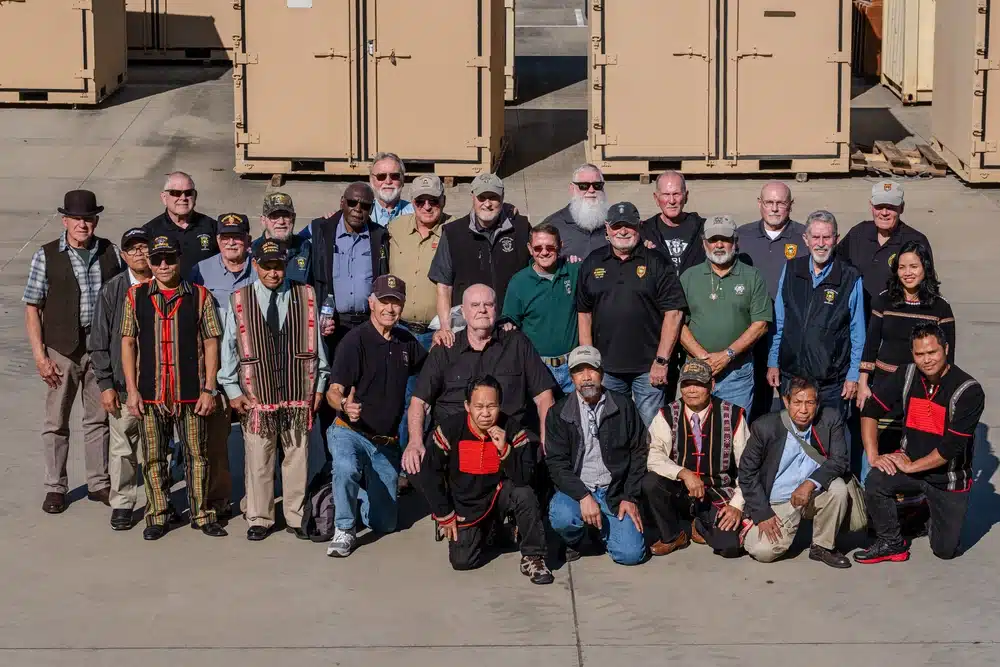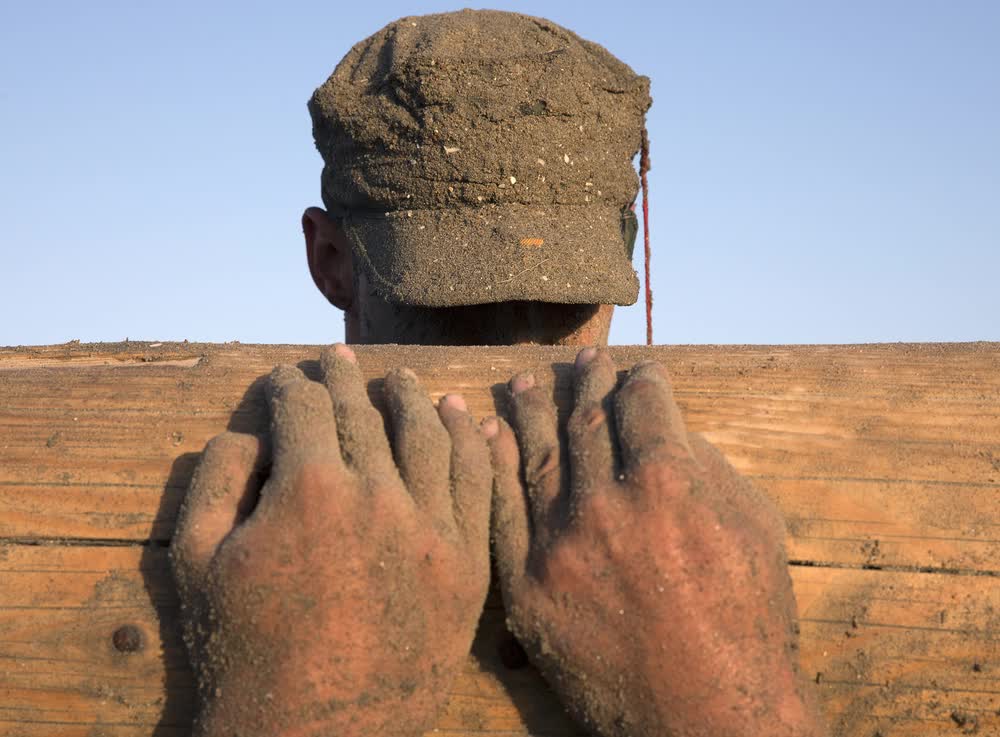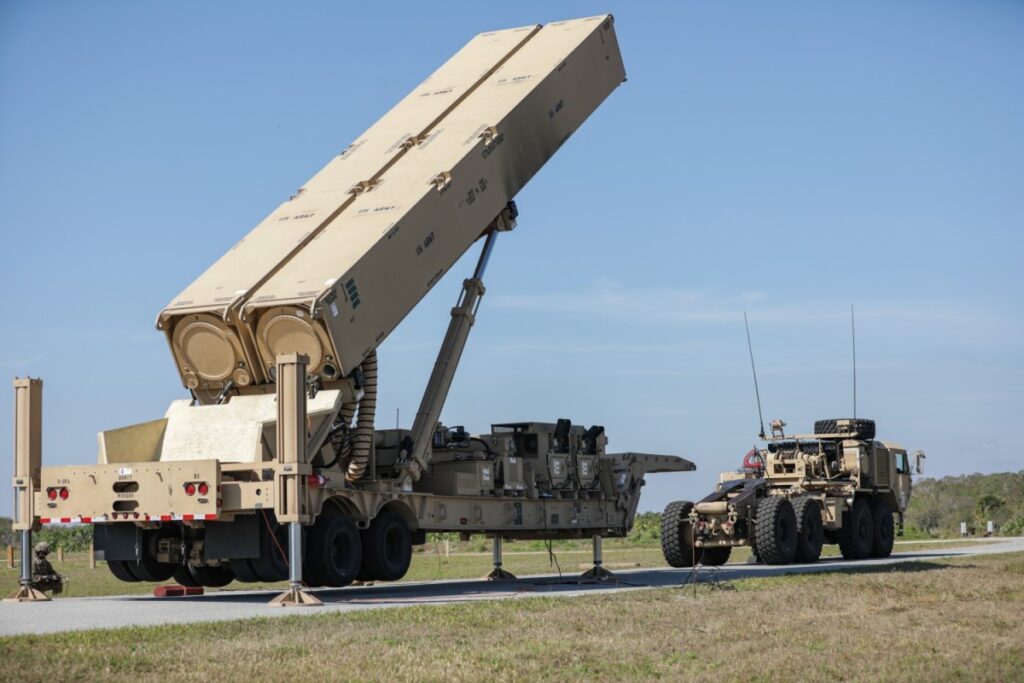The warriors of the Military Assistance Command Vietnam, Studies and Observations Group (MACV- SOG), known simply as SOG, were among the best the U.S. has ever produced and a dozen of them were awarded the Medal of Honor. MACV-SOG was a top-secret, unconventional warfare task force commanded by a U.S. Army Special Forces colonel.
These men created their tactics, techniques, and procedures (TTPs) from scratch. Their uniforms and equipment they adapted from existing gear and many of those adaptations are still relevant today.
History of SOG
During Vietnam, American commanders suffered from a dearth of actionable intelligence about the North Vietnamese movements of large troop concentrations through Laos and Cambodia into South Vietnam. Thus, SOG was born out of necessity and activated on January 24, 1964.
SOG Teams were small, consisting of two-to-three Americans and six-to-nine indigenous personnel, normally Vietnamese, Montagnards, Cambodians, or ethnic Chinese. The trust and loyalty of the indigenous personnel were off the charts.

SOG Teams were given various code names and were commanded by an American NCO or officer designated as a One-Zero, irrespective of rank. The assistant was a One-One, and indigenous operators were designated Zero One, etc. The SOG “One-Zero” course was considered one of the toughest courses at the time, and no one could command a team until they passed.
The teams initially consisted of personnel from the Army’s Special Forces and CIA with Navy SEALs, Force Recon Marines, and other personnel joining later. SOG conducted special operations in North Vietnam, Laos, Cambodia, and South Vietnam.
Missions conducted by SOG included strategic reconnaissance, direct action, sabotage, personnel recovery, Psychological Operations (PSYOP), counter-intelligence, and bomb-damage assessments. The unit’s maritime operations covered the coastal areas of North Vietnam and its PSYOP missions included “Voice of Freedom” radio broadcasts into North Vietnam to publicize the advantages of life in South Vietnam.
Related: What it means to be a Navy SEAL, according to 5 SEALs
The Gear of SOG
The uniforms and equipment that were worn by SOG operators were taken from U.S. stocks and adapted by the teams to fit their mission.
Uniforms and gear
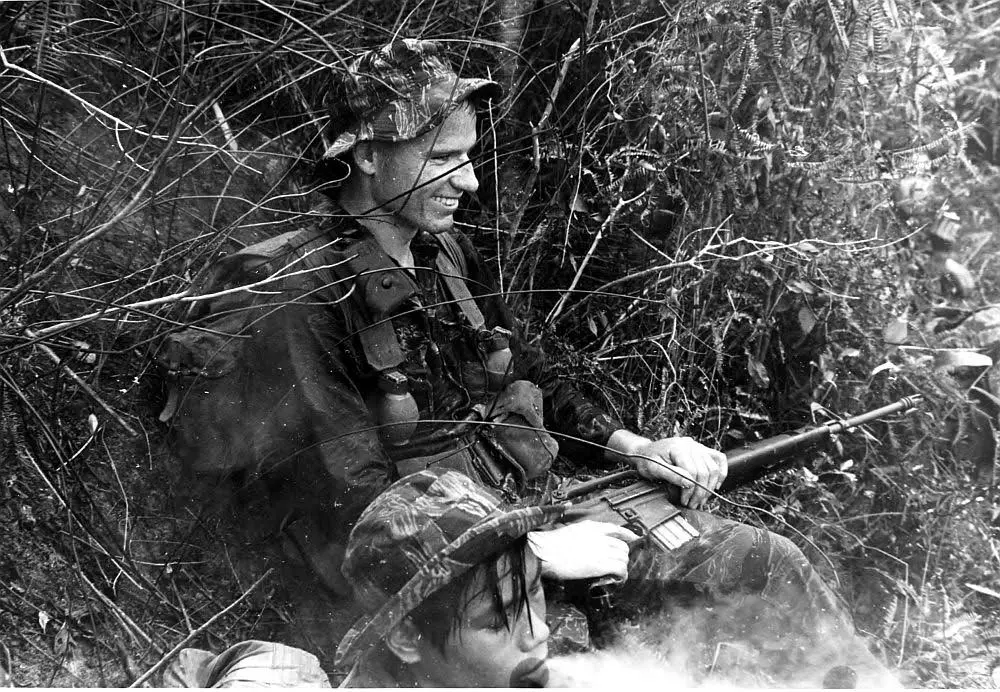
IndianaJones1936)
SOG operators wore either the standard OG-107 jungle fatigues or the tigerstripe fatigues with a black cravat. They used local tailors to sew additional pockets onto the sleeves of their uniform shirts.
In an excellent interview with the Tactical Rifleman, John Stryker Meyer, a former MACV-SOG member, said the operators would sew another pocket just under their chest that was zippered to hold maps, etc.
Initially, the troops used a modified A-7a strap as a belt, but those were eventually replaced by cravats. Each team member would carry four cravats because, as Meyer put it, “Troops bleed a lot when they’re wounded.”
Often, the point man would dress in an NVA uniform if they encountered enemy troops in the jungle, and it would cause the NVA soldiers to hesitate for just a second, thinking they’d met fellow NVA soldiers, allowing the team members to surprise them.
Each man was issued a Seiko watch and a compass that was secured to his body. Standard-issue jungle boots and a variety of harnesses were worn. The SOG troops carried extra canteen pouches that would hold five 20-round magazines and one 30-round mag. Some used electrical tape to make a pull tab for easy removal, while others used a 550-parachute cord.
Meyer said he would also wear an old BAR chest rig. Others, such as General Ken Bowra, carried an NVA chest rig that could carry six additional magazines. Meyer said he typically carried 12 hand grenades on a mission. SOG operators would carry between 620-700 rounds on a mission.
Related: The siege of the Green Berets at Plei Me: The first major battle of the US in Vietnam

Later, troops would wear a STABO rig with the leg straps tied up so they could be quickly lifted out of the jungle via rappel ropes in the event of an emergency extraction.
“For all missions, we never carried any form of identification: no dog tags, no military ID cards, no letters from home — nothing with any personal information on it,” Meyer said.
“Our uniforms were sterile: No rank, no unit designator, no jump wings, no CIB, or South Vietnamese jump wings were displayed. Our green berets stayed at the base. We took extreme measures to ensure that our anonymity remained intact to provide deniability to the U.S. government in the event we were killed or captured.”
“We cut out the section of a target map to carry to the field, thus only showing the grid in the target area, with no further information about the map or the cartographers who produced them. Additionally, we never smoked or cooked in the field,” he said.
Related: These are the 7 finest pieces of flair on US military uniforms
SOG weapons
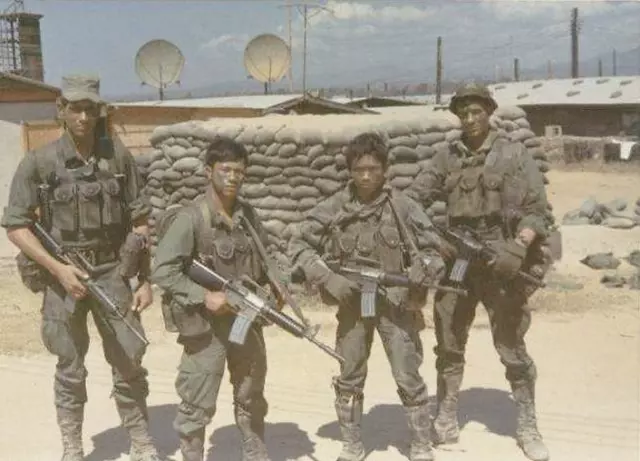
Most troops carried the Colt CAR-15 or the XM-177 with a short 10 or 12-inch barrel for use in thick jungles.
Others would carry a variety of weapons, such as AK-47s, cutdown Russian-made RPD light machine guns, silenced M3 .45 caliber submachine guns (Grease Guns from WWII), Swedish “K” submachine guns, and much more. Slings were adapted from extra cravats with the swivels taped to cut down on noise. Meyer said they didn’t use optics in SOG because most firefights were at nearly point-blank range.
M-79 grenade launchers were carried and cut down to make them easier to use and not get caught in the foliage of the jungle.
For pistols, they used the Browning Hi-Power and an obscure weapon known as the GyroJet rocket pistol that fired a tiny rocket that would ignite at about 30 feet. Knives were the issued SOG knives, USAF survival knives, SOG-issue Bolo, or personally owned Randalls.
Related: These are 6 of the weirdest suppressed weapons of Vietnam
Communications
SOG teams carried the PRC-25 FM radio that operates between 30.00 to 75.95 MHz in 50 kHz steps. Meyer told me that the NVA frequently would listen in to their communications and would sometimes talk to the teams on the ground.
The AN/PRC-90 was a Vietnam War-era airman rescue set. The radio operates on 243 and 282.8 MHz AM and also included a beacon mode and a tone generator to allow the sending of Morse Code.
All team members except one would carry cutdown VS-17 panels; the lone exception would carry a full-sized panel. Operating in the thick jungle, the Covey leader (aircraft overhead) often couldn’t pinpoint the team’s location. So, the One-Zero would fire a pen flare.
SOG lives on today

Although there are several differences between the risk-averse culture of today and the SOG operators who suffered more than 100% casualties, many similarities remain.
The Special Patrol Insertion/Extraction System (SPIES) rig that is used today by troops in a jungle or water environment is basically a STABO rig that has been adapted to fit today’s gear.
The uniforms that SF troops wear today with the slant pockets on their shirts, and extra pockets sewn on their shirts’ arms are straight out of SOG. The short M4s that the operators carry, other than the advanced optics they have today, look remarkably similar to the CAR-15s of yesteryear.
Meyer and the surviving SOG warriors are the legends that the modern SF operators continue to look up to as the forebearers who set lofty standards.
As a young SF operator, the SOG guys and the OSS before them were my heroes. And still are. I had spoken with Meyer on the phone for several hours and finally got a chance to meet him in person last week at Camp Bull Simons. He and other SOG vets were there to talk with 7th SFG (A) operators about the difficulties of working in the triple-canopy jungle.
Feature Image: MACV-SOG veterans and Vietnamese Montgard pose together during MACV-SOG heritage week, Fort Bragg NC, November 10, 2021. (U.S. Army Photo by Sgt. Gavin J. Lewis)
